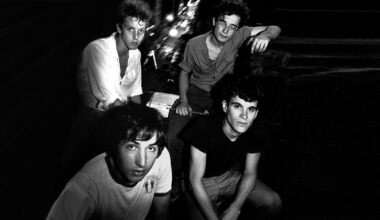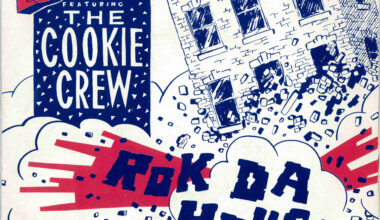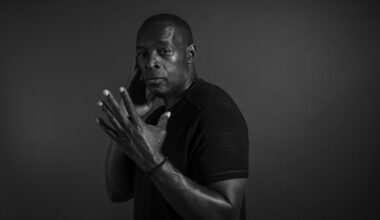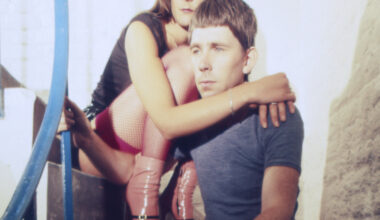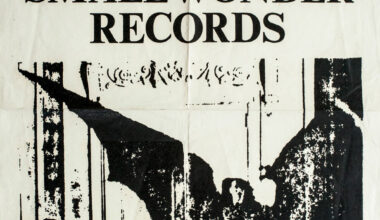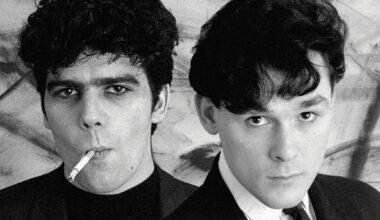Sally Rodgers talks about the rise and rise of A Man Called Adam’s 1990 Balearic classic ‘Barefoot In The Head’
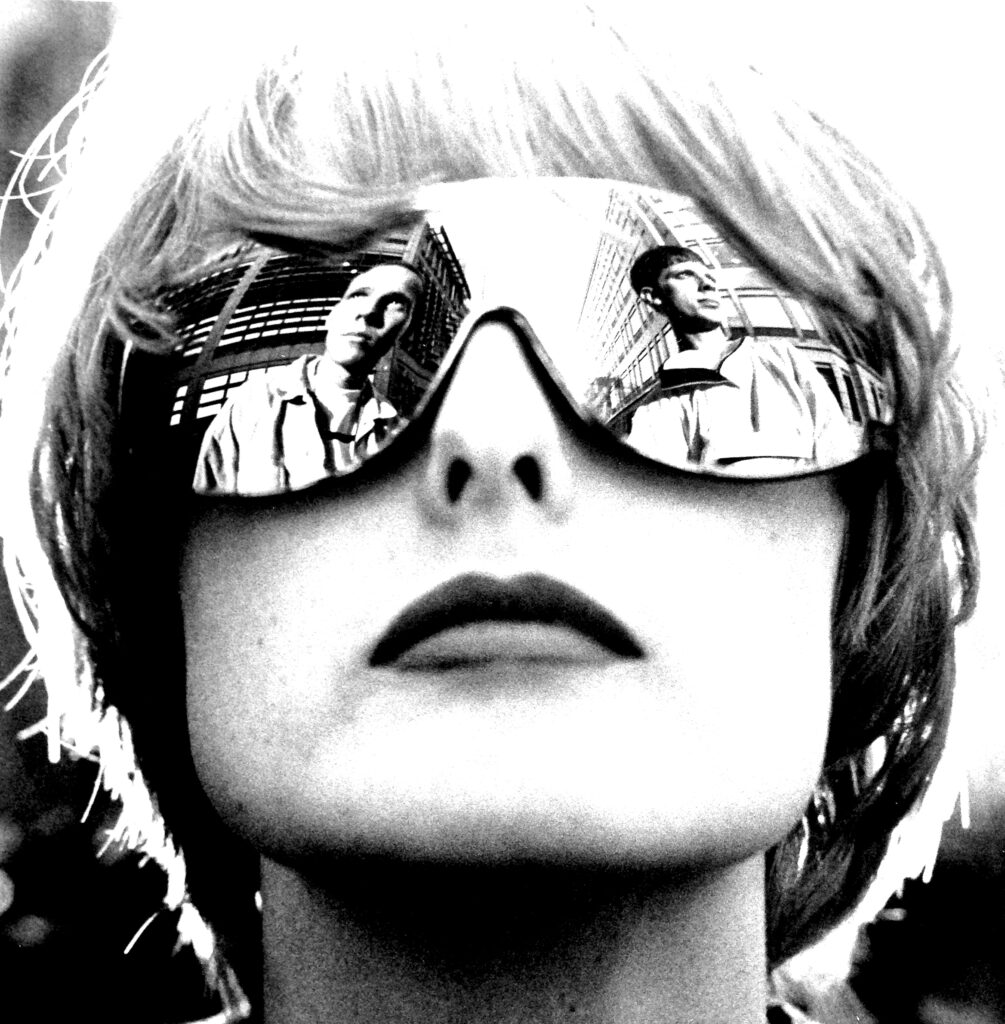
“Gilles Peterson used to do a monthly night at The Wag Club called Wah-Wah Acid Jazz and somehow A Man Called Adam became the resident band. We were a 10-piece jazz band then and we were pathetically ambitious, doing covers of 1960s film soundtracks. Our favourite was Sergio Mendez’s ‘Brazil 66’.
“The core members were me, Steve [Jones], Paul Daley [later of Leftfield] and a guy called Derek Delves, who was incredibly stylish and had a huge following of people who adored him. We also had a bassist called Pete Woolcott who drove an amazing black Citroën Dyane. He was a good bass player, but he was in because of the car. We were a strange, deluded bunch. It was total 60s kitsch. I used to wear all sorts of wigs and catsuits. We were more interested in dressing up and having our photographs taken than anything.
“When Gilles started Acid Jazz Records, we did some tracks for him. We worked with an engineer called Mat Clark at the Westminster Basement Youth Club, where Jerry Dammers used to do his anti-apartheid parties. Mat had an Akai sampler – this was 1988 and they were very new – and we used it to loop bits of the live musicians. Our second single for Acid Jazz, ‘Earthly Powers’, was a retro jazz-funk thing, but the B-side was an electronic reworking of the A-side. Of course, you’re not sitting there thinking, “Let’s make an interesting hybrid of Latin jazz and contemporary machine music”, you’re just doing it. It was completely accidental, but suddenly we were acid house instead of acid jazz.
“A friend of ours called Tony Barry said, ‘You’ve got to come to one of these raves’. Tony was in a band called Tyrrel Corporation and he’d been my first boyfriend back in my home town of Redcar when I was 16. So we went to this rave near Hungerford, on a beautiful horse stud farm in the middle of nowhere. I took more ecstasy that night than I ever did again. I had my mind opened wide that night.
“This must have been 1989 and the next track we recorded after that was ‘Ameoba’ [B-side to A Man Called Adam’s third single], which is proper acid house. We used a 909 drum machine because we really wanted it to sound like a record from Chicago. They don’t turn out like that, of course, because you’re not from Chicago, you’re from Teeside and Coventry, but that was the idea.
“Acid Jazz didn’t really like acid house, so we needed to move on and Big Life came in for us. Despite having people like Yazz on the roster, they seemed like an indie label, but with hindsight they weren’t the best label for us. We just liked the people there so we signed.
“‘Barefoot In The Head’ was our first single for Big Life. It’s actually a bit of a Frankie Knuckles rip-off. We took the bassline from ‘Tears’ and inverted it. Steve had a keyboard that his dad had bought him from Tandy, we used to carry it around wrapped in a blanket, and that’s where we got those choral sounds. I was reading a lot of science fiction at the time and ‘Barefoot In The Head’ was originally the title of a Brian Aldiss book. Is it an ode to ecstasy? That’s totally what it is. “Loving you has made me strong / Now I’m ready to go on / And my mind’s wide open, baby / And I won’t let this feeling go / I can’t believe this love is wrong…”. I’m not talking about a person there, I’m talking about little pills.
“The record came out around the time that people like Ten City and 808 State were in the charts. That was when Paul left to do his Leftfield stuff, which was a bit harder and deeper and more intense. If you listen to ‘Not Forgotten’ now, it seems pretty chilled compared to that much more aggressive sound Leftfield adopted later on.
“I think ‘Barefoot In The Head’ scraped the Top 50 at one point and that would have been that for most acts, but things changed for us when we went to Ibiza. We’d played some of Charlie Chester’s underground parties with Boy’s Own and Charlie was running a trip to Ibiza, taking out a couple of hundred ravers, a load of DJs and some bands. We went to Big Life and asked for some money for the flights and they were like, ‘What, for you to run around with your mates on the beach?’, but somehow they paid for us to go.
“Happy Mondays were out there, as were all the Boy’s Own DJs – Andy Weatherall, Terry Farley and Rocky & Diesel. Kevin Sampson, who was managing The Farm at the time, was making a movie of their trip. We featured in the resulting documentary, ‘A Short Film About Chilling’, which was shown on Channel 4 and was the biggest youth TV audience they ever had. It was one of those right place at the right time things. It didn’t turn us into a hit band, but it did catapult us into people’s consciousness.
“We were blown away by Ibiza. It was when the chic hippies still ran the show, so it was full of oddballs and bohemian characters. There was a place called Milestones, it wasn’t even a bar, it was a hut up in the hills above Santa Eulalia, and it had a little room lined with vinyl records, stuff like Hendrix and Crosby Stills & Nash. Somebody just played records and you sat under the stars having a beer.
“Hearing our music out there helped us make sense of it. It’s that Latin jazz vibe. You’re in the Balearic Islands and the track’s got that Spanish underpinning. Although ‘Barefoot In The Head’ is very elemental, the sound of the lapping sea and all that, we’d never been to Ibiza before. The influence was more Californian.
“The spoken word sample on there is Rod McKuen, a 1960s American poet, singer and songwriter, and he’s talking about the beaches in California. He has an incredibly mellifluous voice. I always liked that bit where he talks about the killdeer birds “marching down to the sea and back”. Steve did this thing with the sequencer and it’s such a perfect musical declamation. The sequencer goes all the way forward and all the way back, it completely mirrors the lyrical content.
“The lapping waves on ‘Barefoot In The Head’ is actually a field recording of sea, but it wasn’t the Mediterranean or the Pacific. It was probably from Teeside. That’s where we shot the little film that went with the track. We used an orange filter to try to make it look somewhere exotic, but if you look carefully you can see ICI and British Steel in the background.”
